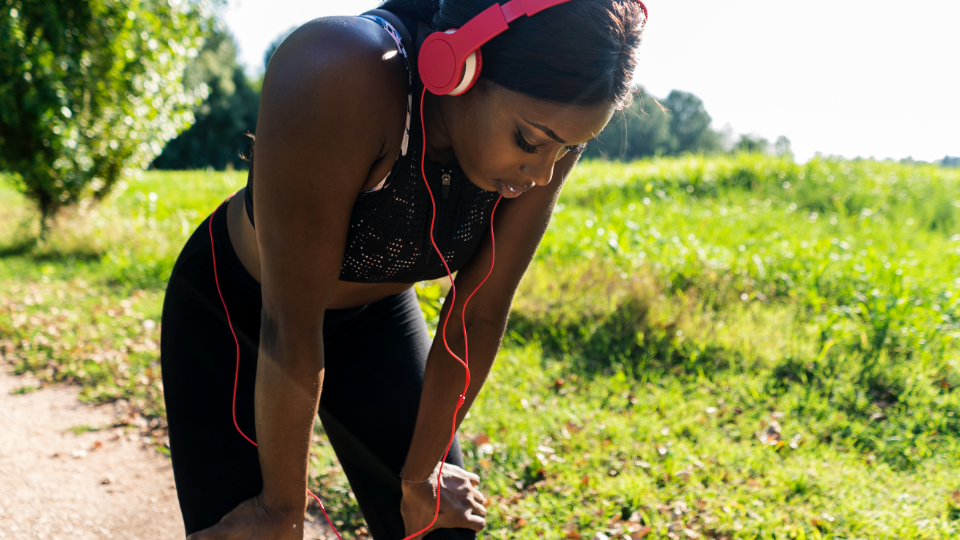Endurance athletes, like runners and cyclists, generally turn to a diet high in carbohydrates because they know they are in continuous need of a readily available source of fuel. But over the last few years some athletes have used a technique called “training low” that involves restricting carbohydrates before and during exercise.
The idea behind training low is to train muscles to adapt to burning more body fat during times of endurance exercise—particularly when stored carbohydrate in muscle is depleted—to help keep the body from reaching fatigue, or “bonking” out.
However, athletes generally find that training low often comes at the cost of performance gains. In fact, some research has even suggested that it can interfere with the ability of muscle to use carbohydrates normally. The reason training low hasn’t worked well is because athletes find that they feel worse during hard bouts of training when they are low on carbohydrates.
Now French scientists have reported using an adapted form of training low designed to help avoid recurring problems of performance for athletes. The new method involves athletes restricting their carbohydrate intake only after their evening training and before they go to bed at night.
The scientists studied this form of sleeping low on 21 highly trained triathletes and found that the nutritionally timed carbohydrate significantly improved their athletic performance.
In a parallel-designed study, they divided the triathletes into a timed carbohydrate group and a regular intake group over three weeks following the exact same cycling training schedule. Over the course of three weeks, the subjects in the treatment group followed a high-intensity training regimen in the evening to increase performance, then restricted carbohydrates at night. The next morning they performed a low-intensity workout to promote muscle adaptation for metabolizing more fat.
The control group followed the exact training routine and ate similar amounts of carbohydrates, but did not restrict the timing of carbohydrates. The only difference between the two groups was the nutritional timing of carbohydrate ingestion.
Those who timed their carbohydrate intake found they had better exercise economy, exercise capacity, and even improved their 10-kilometer running time. They also decreased body fat by an average of 8 percent compared to the control group who only lost 2.5 percent.
Although the theoretical principles behind sleeping low have been around for some time, this study was the first to report increased performance after training using low-carbohydrate availability in high-level endurance athletes.
Again, the athletes’ performance improved, while their perceived exertion was lower, and their body mass and body fat decreased.
The researchers concluded that the observed improvements were due to reducing carbohydrates before bed. The reason wasn’t because of the widely held belief that “carbohydrates in the evening will make you fat,” but rather because of the way the human body optimizes its response to carbohydrate fuel utilization. In other words, the body learns how to use fuel stores in response to exercise need.
If an athlete consumes sufficient carbohydrates, there’s no need to increase fat use for fuel. If, on the other hand, an athlete chooses to (a) fuel with carbohydrates when the body really needs them, like during high-intensity training, then the athlete triggers an adaptive response at high intensities, and (b) cuts off of a readily available carbohydrate supply when it’s not needed (during sleep and low-intensity exercise). In this way, athletes maximize the adaptive response to both high- and low-intensity training and boost overall training results.
How to Incorporate Sleep Low Training
How can athletes incorporate carbohydrate timing into their training using Isagenix products?
- Step 1: On the day of high-intensity training, athletes should consume a large portion of carbohydrates for the day leading up to and during exercise.
- Step 2: Train in the late afternoon or early evening. Afterward, restrict carbohydrates for the rest of the day. Go to sleep.
- Step 3: In the morning, athletes should drink coffee or water and do a light run or ride for distance. But they should eat no carbohydrates. After light training, they can go back to consuming carbohydrates as usual.
Here’s an example of incorporating nutritional timing of carbohydrates along with other Isagenix Performance Products:
| 12 p.m. | IsaLean® Shake with fruit |
| 3 p.m. | Bagel with peanut butter and AMPED™ NOx |
| 5 p.m. | High-intensity workout, supplemented with 1-2 AMPED Fuel |
| 7 p.m. | Dinner with low carbohydrates; fillet of fish with steamed vegetables |
| 10 p.m. | IsaPro® or IsaLean PRO Shake |
The Next Morning…
| 7 a.m. | Isagenix Coffee with 1 oz Cleanse For Life® |
| 7:30 a.m. | Low-intensity Workout |
| 9 a.m. | Isalean Shake (Back to normal eating pattern) |
References
Marquet LA et al. Enhanced Endurance Performance by Periodization of CHO Intake: “Sleep Low” Strategy. Med Sci Sports Exerc. 2016 Jan 7. [Epub ahead of print]





